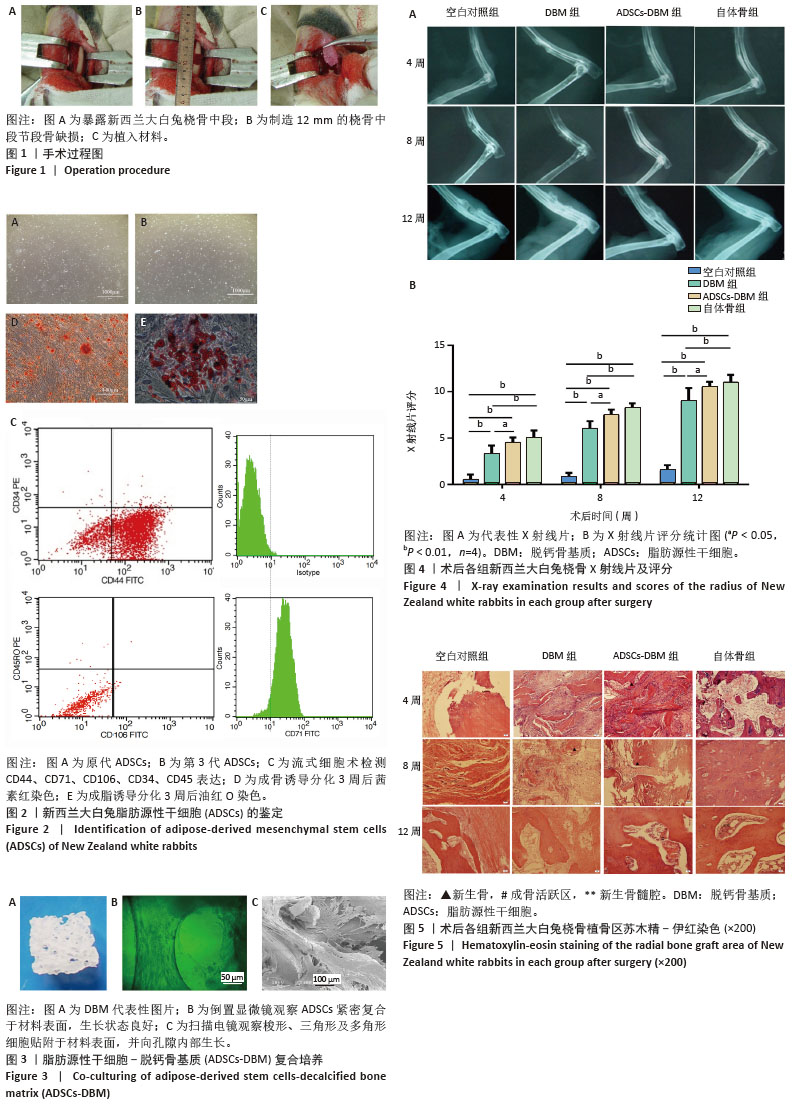[1] ZHEN C, SHI Y, WANG W, et al. Advancements in gradient bone scaffolds: enhancing bone regeneration in the treatment of various bone disorders. Biofabrication. 2024;16(3):032004.
[2] BALDWIN P, LI DJ, AUSTON DA, et al. Autograft, Allograft, and Bone Graft Substitutes: Clinical Evidence and Indications for Use in the Setting of Orthopaedic Trauma Surgery. J Orthop Trauma. 2019;33(4):203-213.
[3] BELOTI MM, ROSA AL. Bone Regeneration and Repair Materials. J Funct Biomater. 2024;15(3):78.
[4] HARAKAS NK. Demineralized bone-matrix-induced osteogenesis. Clin Orthop Relat Res. 1984;(188):239-251.
[5] HONSAWEK S, BUMRUNGPANICHTHAWORN P, THITISET T, et al. Gene expression analysis of demineralized bone matrix-induced osteogenesis in human periosteal cells using cDNA array technology. Genet Mol Res. 2011;10(3):2093-2103.
[6] HUANG YZ, HE T, CUI J, et al. Urine-Derived Stem Cells for Regenerative Medicine: Basic Biology, Applications, and Challenges. Tissue Eng Part B Rev. 2022;28(5): 978-994.
[7] REN J, LI Z, LIU W, et al. Demineralized bone matrix for repair and regeneration of maxillofacial defects: A narrative review. J Dent. 2024;143:104899.
[8] ZHANG H, YANG L, YANG XG, et al. Demineralized Bone Matrix Carriers and their Clinical Applications: An Overview. Orthop Surg. 2019;11(5):725-737.
[9] CHEN C, LI Z, XU C, et al. Self-Assembled Nanocomposite Hydrogels as Carriers for Demineralized Bone Matrix Particles and Enhanced Bone Repair. Adv Healthc Mater. 2024;13(10):e2303592.
[10] DONOS N, AKCALI A, PADHYE N, et al. Bone regeneration in implant dentistry: Which are the factors affecting the clinical outcome? Periodontol 2000. 2023;93(1):26-55.
[11] VERMEULEN S, TAHMASEBI BIRGANI Z, HABIBOVIC P. Biomaterial-induced pathway modulation for bone regeneration. Biomaterials. 2022;283:121431.
[12] PATEL D, WAIRKAR S. Bone regeneration in osteoporosis: opportunities and challenges. Drug Deliv Transl Res. 2023;13(2):419-432.
[13] SUN Y, ZHAO H, YANG S, et al. Urine-derived stem cells: Promising advancements and applications in regenerative medicine and beyond. Heliyon. 2024;10(6):e27306.
[14] 李欢,苗博,韩智慧,等.牙髓和牙周韧带间充质干细胞成骨能力差异分析研究[J].中国骨质疏松杂志,2024,30(8):1102-1107.
[15] 颉丽英,刘司麒,吴明芮,等.人脐带间充质干细胞移植治疗心肌肥厚模型小鼠[J].中国组织工程研究,2022,26(30):4826-4833.
[16] MISHRA VK, SHIH HH, PARVEEN F, et al. Identifying the Therapeutic Significance of Mesenchymal Stem Cells. Cells. 2020;9(5):1145.
[17] HICOK KC, DU LANEY TV, ZHOU YS, et al. Human adipose-derived adult stem cells produce osteoid in vivo. Tissue Eng. 2004;10(3-4):371-380.
[18] QIN Y, GE G, YANG P, et al. An Update on Adipose-Derived Stem Cells for Regenerative Medicine: Where Challenge Meets Opportunity. Adv Sci (Weinh). 2023;10(20):e2207334.
[19] ALMALKI SG. Adipose-derived mesenchymal stem cells and wound healing: Potential clinical applications in wound repair. Saudi Med J. 2022;43(10):1075-1086.
[20] WAGNER JM, REINKEMEIER F, WALLNER C, et al. Adipose-Derived Stromal Cells Are Capable of Restoring Bone Regeneration After Post-Traumatic Osteomyelitis and Modulate B-Cell Response. Stem Cells Transl Med. 2019;8(10):1084-1091.
[21] LIU J, ZHOU P, LONG Y, et al. Repair of bone defects in rat radii with a composite of allogeneic adipose-derived stem cells and heterogeneous deproteinized bone. Stem Cell Res Ther. 2018;9(1):79.
[22] TORRES-GUZMAN RA, HUAYLLANI MT, AVILA FR, et al. Application of Human Adipose-Derived Stem cells for Bone Regeneration of the Skull in Humans. J Craniofac Surg. 2022;33(1):360-363.
[23] MAGLIONE M, SALVADOR E, RUARO ME, et al. Bone regeneration with adipose derived stem cells in a rabbit model. J Biomed Res. 2018;33(1):38-45.
[24] GU H, XIONG Z, YIN X, et al. Bone regeneration in a rabbit ulna defect model: use of allogeneic adipose-derivedstem cells with low immunogenicity. Cell Tissue Res. 2014;358(2):453-464.
[25] WEN C, YAN H, FU S, et al. Allogeneic adipose-derived stem cells regenerate bone in a critical-sized ulna segmental defect. Exp Biol Med (Maywood). 2016;241(13):1401-1409.
[26] ZHAO Y, LIN H, ZHANG J, et al. Crosslinked three-dimensional demineralized bone matrix for the adipose-derived stromal cell proliferation and differentiation. Tissue Eng Part A. 2009;15(1):13-21.
[27] ZHANG N, ZHOU M, ZHANG Y, et al. Porcine bone grafts defatted by lipase: efficacy of defatting and assessment of cytocompatibility. Cell Tissue Bank. 2014;15(3):357-367.
[28] ZHANG N, MA L, LIU X, et al. In vitro and in vivo evaluation of xenogeneic bone putty with the carrier of hydrogel derived from demineralized bone matrix. Cell Tissue Bank. 2018;19(4):591-601.
[29] MCGOVERN JA, GRIFFIN M, HUTMACHER DW. Animal models for bone tissue engineering and modelling disease. Dis Model Mech. 2018;11(4):dmm033084.
[30] HIXON KR, MILLER AN. Animal models of impaired long bone healing and tissue engineering- and cell-based in vivo interventions. J Orthop Res. 2022;40(4):767-778.
[31] EINHORN TA, LANE JM, BURSTEIN AH, et al. The healing of segmental bone defects induced by demineralized bone matrix. A radiographic and biomechanical study. J Bone Joint Surg Am. 1984;66(2):274-279.
[32] THOMAS S, JAGANATHAN BG. Signaling network regulating osteogenesis in mesenchymal stem cells. J Cell Commun Signal. 2022;16(1):47-61.
[33] MOHAMED-AHMED S, FRISTAD I, LIE SA, et al. Adipose-derived and bone marrow mesenchymal stem cells: a donor-matched comparison. Stem Cell Res Ther. 2018;9(1):168.
[34] MOHAMED-AHMED S, YASSIN MA, RASHAD A, et al. Comparison of bone regenerative capacity of donor-matched human adipose-derived and bone marrow mesenchymal stem cells. Cell Tissue Res. 2021;383(3):1061-1075.
[35] KANG BJ, RYU HH, PARK SS, et al. Comparing the osteogenic potential of canine mesenchymal stem cells derived from adipose tissues, bone marrow, umbilical cord blood, and Wharton’s jelly for treating bone defects. J Vet Sci. 2012;13(3):299-310.
[36] ZHANG J, WEHRLE E, ADAMEK P, et al. Optimization of mechanical stiffness and cell density of 3D bioprinted cell-laden scaffolds improves extracellular matrix mineralization and cellular organization for bone tissue engineering. Acta Biomater. 2020;114:307-322.
[37] GODOY ZANICOTTI D, COATES DE, DUNCAN WJ. In vivo bone regeneration on titanium devices using serum-free grown adipose-derived stem cells, in a sheep femur model. Clin Oral Implants Res. 2017;28(1):64-75.
[38] WEN Y, JIANG B, CUI J, et al. Superior osteogenic capacity of different mesenchymal stem cells for bone tissue engineering. Oral Surg Oral Med Oral Pathol Oral Radiol. 2013;116(5):e324-e332.
[39] HUSCH JFA, COQUELIN L, CHEVALLIER N, et al. Comparison of Osteogenic Capacity and Osteoinduction of Adipose Tissue-Derived Cell Populations. Tissue Eng Part C Methods. 2023;29(5):216-227.
[40] BUNNELL BA. Adipose Tissue-Derived Mesenchymal Stem Cells. Cells. 2021;10(12):3433.
|
